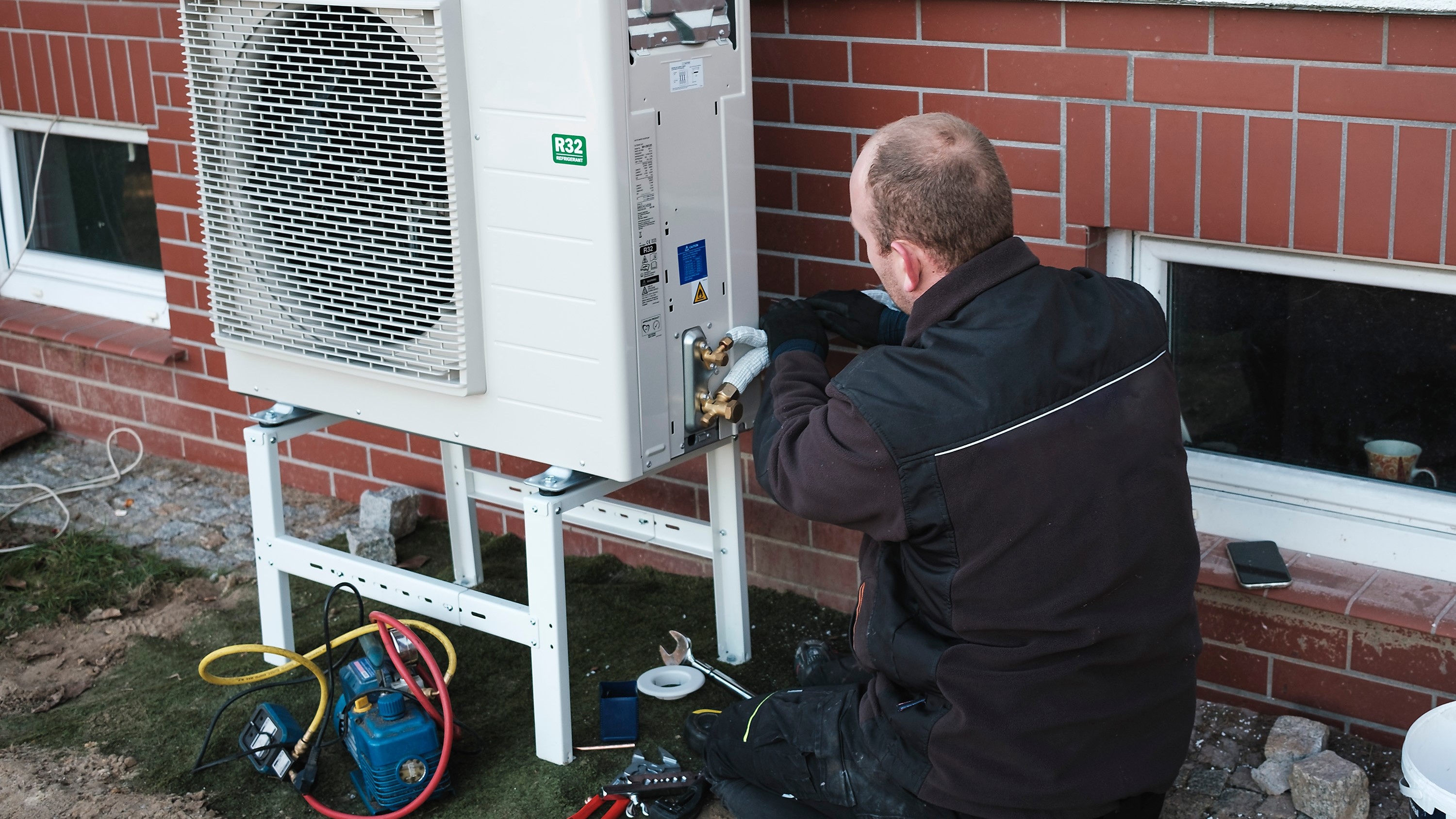
The UK residential sector is less energy-efficient than other countries in Europe as a result of poor design and inadequate insulation – and this needs to be rectified.
Research from the Institute for Government shows that a UK home with an indoor temperature of 20°C and an outside temperature of 0°C loses, on average, 3°C after five hours – a drop of up to three times as much as homes in Germany.
In my opinion, what lies behind this inconsistent performance is the sector's fragmented property ownership. But as major property investors increase their buy-to-rent portfolios, there is an opportunity for improvements at scale.
At the same time, with more occupiers and owners seeking to improve building performance beyond simply complying with legislation, the commercial property market will split. Better buildings will command significantly higher value, while properties that fall behind will be seen as less-resilient assets at risk of being stranded.
At TFT, we're already seeing waves of asset disposals where inefficient properties are deemed too great a future risk – there is no hard line of which energy ratings are least desirable, it depends on the purchaser's appetite for risk. We work with many building owners already seeking to meet their own ambitious standards beyond compliance, because they know these measures will maximise the value of their assets now and in the future.
Research calls for policy to set incentives
Our view is that the government must set incentives for building owners and occupiers to meet higher standards where current commercial conditions do not. Targeted government policy and investment can ensure the whole sector is aligned to the same goals and able to act on them.
There are precedents for this kind of intervention, such as the Minimum Energy Efficiency Standards (MEES), which encourage owners to improve energy efficiency as a means of maintaining the investment value of their assets.
Together with Greengage Environmental, Maples Teesdale, Derwent London, JLL and Dorrington, TFT, therefore, funded research by the British Property Federation (BPF) into the challenges faced by UK real estate in decarbonising buildings, with a view to proposing policy that could help overcome these.
The research surveyed 71 senior leaders from 45 organisations with UK operations, representing investors, developers, managers, owners and occupiers, as well as further workshop interviews with a selection of large real-estate investment trusts (REITs) and asset managers.
The BPF research – published in February – highlights six particular areas where progress is limited by lack of confidence about investing, or where current practice undermines high-level decarbonisation ambitions.
Tax reform can boost energy efficiency
The first priority is to improve the energy efficiency of our buildings. This will entail – among other things – the widespread adoption of operational performance metrics to understand the gulf between a building's intended energy usage, as designed, and its actual day-to-day consumption.
Retrofit programmes to ensure the buildings meet current and future MEES requirements will be essential, and tax changes can offer an incentive to do so. For residential buildings, the BPF report proposes 0% VAT on repairs and maintenance that aim to improve energy efficiency, while, for commercial buildings, business rates reforms could encourage retrofit and put enhancement of existing buildings on a par with new-build projects.
Cutting taxes on such works will provide an immediate incentive. These works will in turn boost the green economy, with increased employment and innovation in low-carbon materials and technology.
On-site solar power mandate urged
Second, the report recommends that the government mandates the installation of photovoltaic (PV) panels on all new large commercial, residential and public buildings. This includes reviewing upcoming policies to ensure that they are not going to discourage the uptake of the technology.
If PV panels are not viable for specific buildings, the report suggests that green roofs are mandated instead. These are partially or completely covered with vegetation and a growing medium over a waterproofing membrane. They can promote biodiversity by providing an important microclimate for insects and bird life, and also reduce the heat retained by the built environment – the urban heat island effect – as well as rainfall run-off on to impermeable paved surfaces.
Embodied carbon assessment to be enforced
Third, embodied carbon needs to be regulated; 80% of survey respondents called for legislation in this area to give further incentives for decarbonisation.
Regulating embodied carbon will involve the use and disclosure of life-cycle carbon assessments (LCAs) for new developments and refurbishments alike. LCAs consider not just operational carbon emissions but factor in the carbon used – that is, embodied in – the works and materials specified for a building. They provide an holistic view and inform better decisions for decarbonisation.
LCAs should first be enforced for large buildings and building projects, and then rolled out more widely. Embodied carbon reduction targets should be set by the government, based on appropriate benchmarks, and reviewed on a regular basis.
'Life-cycle carbon assessments provide an holistic view and inform better decisions'
More rigour can support off-site renewables
Fourth, as businesses seek to procure more green energy, the report calls on the UK government to strengthen the criteria for energy providers wanting to use green tariff labels.
The current system requires suppliers to own a renewable energy guarantee of origin (REGO) certificate, but not to link this with the renewable energy itself. As a result, a REGO does not guarantee 100% renewable supply, with the building highly likely to receive some fossil fuel-generated electricity. The report calls for green tariffs to link the REGO certificate more tightly with the renewable energy itself.
The proposed approach provides welcome clarity, which will allow businesses to make informed decisions about from whom to procure their energy. That will in turn drive investment in renewable energy, as suppliers seek to gain a competitive edge and respond to the growing demand for fossil fuel-free energy.
In addition, the government should allow REITs to invest in off-site renewables. Broadening the asset classes in which such trusts can invest to include such generation infrastructure will unlock finance to support the wider decarbonisation of the grid.
Planning resources must be increased
Fifth, the report recognises that local planning authorities need more support to enable the net-zero transition. The upcoming review of the National Planning Policy Framework offers a clear opportunity to do so.
In particular, the report focuses on the way that the planning system supports the retrofitting of listed and heritage buildings. It calls for additional investment in the capacity and capability of local planning authorities, including training on specific technologies such as low-carbon heat and insulation, to prepare them to handle complex planning decisions.
Data sharing will enable better performance
Sixth, and last, mandatory data sharing could underpin all these initiatives. Access to data of all kinds is a major challenge for both property owners and occupiers, so mandatory disclosure of energy consumption for all large commercial buildings could encourage change.
In addition, a mandate for green leases for all commercial property could be included as part of the review of the Landlord and Tenant Act 1954, as well as provisions on water, waste and biodiversity. As defined by the report, green leases are standard forms with clauses that require not only data sharing but also improving and managing the environmental performance of buildings, by occupiers and owners alike.
When it comes to data gaps at a national level, the government could also set up centralised, anonymous pools of building data from suppliers. This widespread transparency is necessary for the collection of high-quality data, and to establish a better understanding of where the property sector is most carbon-intensive.
Retrofit programme can coordinate approach
Our industry can still shorten the path to net-zero carbon by taking a considered, joined-up approach to creating and improving buildings for energy efficiency. The report recommends a national retrofit programme to provide clear direction for the industry.
Current high energy prices mean that such works may pay back more quickly than they might have done beforehand. But these policies must be introduced quickly to help bring net-zero targets within reach.
RICS champions sustainability across professions
With the built environment estimated to be responsible for around 40% of global carbon emissions, RICS is championing sustainable practices across the built and natural environment. We are also empowering professionals to embed sustainability considerations into the way they work and better measure environmental impacts.


